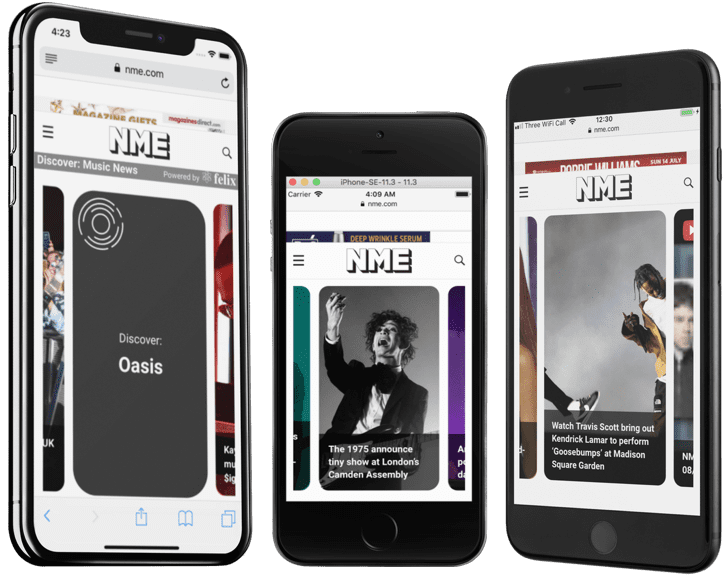|
Getting your Trinity Audio player ready...
|
The only time to panic is when people stop reading, said Bo Sacks on this site last month. Go
My guess is that he’s right. Social media can’t kill the real media, no matter what ‘Faceb0rg’ says. The only time to panic is when the content all disappears – because our ecosystem is so co-dependent on it, Facebook included. In the meantime, there’s work to be done to find our metier, the best and happiest way for everybody to coexist and make enough money to go round.
One thing that seems obvious is we need a change of focus. As I’ve said elsewhere, social media isn’t the enemy of the publisher. It’s not that black and white.
New numbers from the Reuters News Institute suggest that attitudes are (sort of) changing for the better on this score. Less than half of publishers (43%) think Facebook is important to them this year.
At the same time, I think Facebook, Instagram, Snapchat (and the rest) are really important. Not as an Anti-Christ, but as a set of standards that every publisher should aspire to when it comes to delivering a best-in-class user experience for their product.
Why? Well, last month Allure magazine introduced a new editorial look and feel, and something that the magazine’s editor-in-chief said really struck a chord. Talking about the change in design direction for her mag, says Michelle Lee: “With magazines in general, you have standard departments, story formats — as an editor it’s easy to get stuck in that. Eventually, it can get really boring. I always want to keep things fresh.”
Keeping things fresh is what social platforms are great at. They work insanely hard on developing the new formats, UIs, journeys, and content
Here’s more from the Reuters report, this time on the rise of the ’stories’ format:
The ephemeral story format has been around for a few years but Facebook says that stories will surpass feeds as the main way people share with friends within the next year. Stories are used daily by 150 million people on Facebook, 190 million on Snapchat, and 300 million on Instagram. WhatsApp status is also a story format, Netflix (movie previews) and YouTube have been experimenting with stories (originally called reels) and AMP stories debuted last year as an open web version that sits on top of some Google searches. These are now being surfaced in the Google News feed on Android devices – a distribution channel that will become more important this year.
That’s a lot of usage and engagement, a lot of ‘keeping it fresh’ at a large scale.
Looking at the traditional publishing world, where else do we see innovation like this? There’s some great work happening at the BBC, but not much else – particularly in the UK.
My feeling is that publishers ought to look to Facebook not as an imposter, but as something of a mentor. Publishers have been stuck for far too long with a narrow page-level view of the world – as a basic unit of measurement, as a user interface, a set of conventions for a user journey and as an advertising delivery mechanism. This is broken. The world no longer wants to use and consume content within the realms of a portrait oblong block – and we’ve long since run out of space to slap any more ads on.
In many ways, Facebook has grown exponentially because it’s never been constrained by the limits of the standard page unit. It just goes on and on and on and on – scrolling, clicking, swiping.
I know this is right. Our work with Ti Media and NME magazine proves it. We’re helping them to deliver a totally new set of social media-like user interfaces (example here) – as accompanying experiences to their normal sites and pages – and we’re seeing their audience development metrics double, almost overnight. None of which is rocket science (although, OK, it does use AI to power it).

When publishers acquire their audiences from social media platforms, what’s the next click action likely to be once they’ve read an article? Read some more pages or go straight back to where they came from?
We know the answer because we do it ourselves every day of the week – rather than deal with more of that same boring old UX – the one that’s cluttered with spam and ads and all kinds of native clickbait – we head straight back… because the content discovery experience on social media is so superior.
I’ll sign off with this great publisher quote, also from the Reuters report:
“Our platform approach is increasingly focused on bringing people back to us. We aren’t interested in building communities on external platforms for the benefit of that platform.”
There’s only one proven way to do that: build a better destination that looks a lot more like those platforms than your current site does.
Roger Warner, CEO, Felix
About Felix
Felix is an AI-driven content engagement solution that helps brands and publishers retain their hard-earned traffic. Its AI-powered engine gives audiences compelling opportunities to discover more amazing content; and uses this as a means of serving better advertising and better pathways into revenue-generating outcomes such as subscriptions, sponsorship, sign-ups


